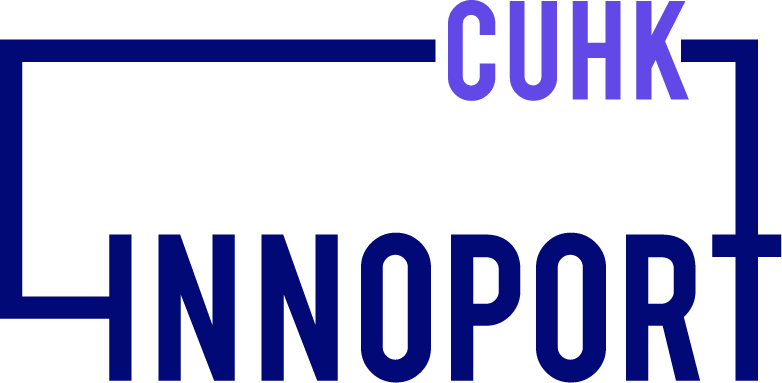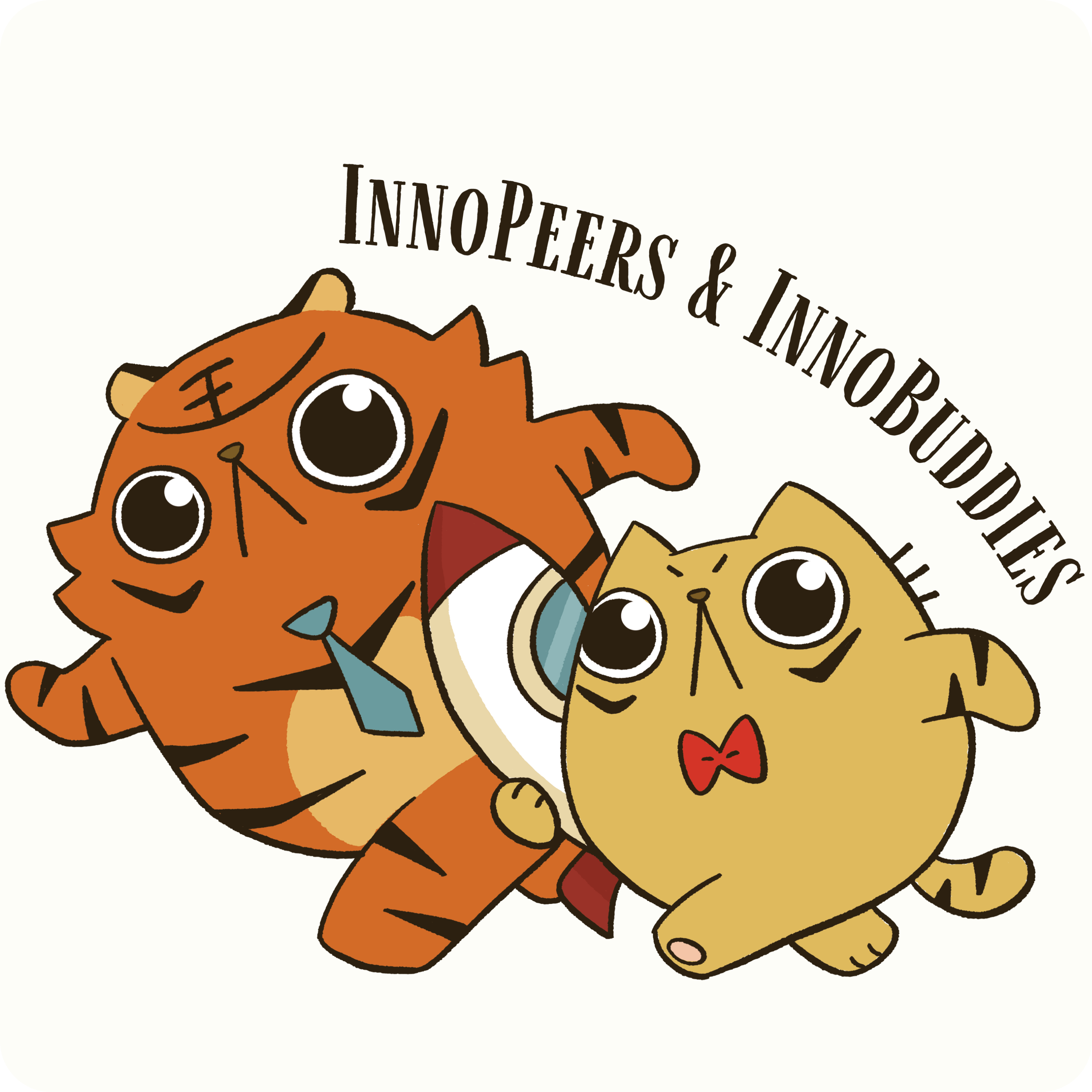“Rare disease patients have no choice; they cannot choose when to fall ill or when to recover.” The last day of February each year is designated as “Rare Disease Day” by the European Organisation for Rare Diseases (EURORDIS).
Rare diseases refer to illnesses with extremely low prevalence and a small number of affected individuals, with most of them lacking effective medical treatments. The World Health Organization estimates that approximately 400 million people worldwide are affected by over 6,000 to 8,000 rare diseases. Some patients gradually lose their abilities to communicate and engage in daily activities, making it difficult to interact with caregivers, as if they are trapped in a hopeless situation.
Edwin Chan, a Professor at the School of Life Sciences , The Chinese University of Hong Kong (CUHK), specializing in neurological diseases, has dedicated his life to researching these rare conditions. With an impressive academic background, including a doctoral degree from the University of Cambridge, he has led a team that successfully uncovered the causes of spinocerebellar atrophy (SCA) . During the two-hour interview, Edwin shared the unfortunate “social reality”: high costs and limited resources in rare disease pharmaceutical development often leave families battling with despair against death.
When closest family members become the heaviest burden, how do you face it? Edwin’s transformation from a scientist to a social innovation leader was inspired by visiting a patient who requested euthanasia, leading him to establish the “Voice Link” program, connecting students from various disciplines. Let us listen to this humble and courteous scientist and learn how he breaks through the barriers of “scientific idealism” in cost-conscious Hong Kong to steadfastly pursue his ideals.
Science, Medicine, and Societal Significance
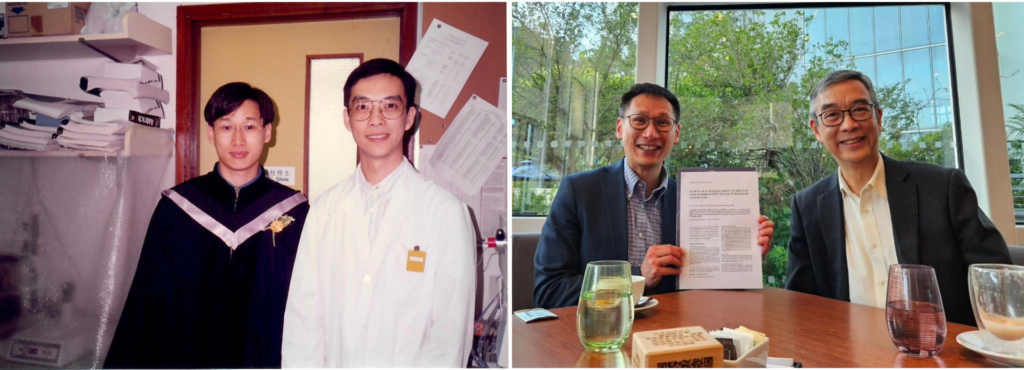
“A teacher once asked, why do people have nightmares, have happy dreams, and then forget the content of their dreams? The unknowns of the nervous system actually offer infinite room for development.” Edwin graduated from the Biochemistry Programme at CUHK and has a deep interest in neuroscience. After graduating in 1995, he pursued a doctoral program in genetics at the University of Cambridge in the United Kingdom. During a seminar held in a “human library” format, where different patients shared their experiences, Edwin discovered that many diseases were related to the brain and nervous system.
Subsequently, Edwin went to the University of Pennsylvania in the United States for postdoctoral training in biomedical sciences. The years spent in the anatomy laboratory gave him a profound understanding of diseases. Starting from 1999, Edwin focused on studying the pathogenic mechanisms of rare neurological diseases.
Doing research, publishing high-impact papers, and gaining a good reputation, he thought he would continue along this path of success. Why did Edwin ultimately choose to return to Hong Kong after running around the world?
Edwin encountered many mentors, including Professor Sandy K.S Luk , who was conducting research at Stanford University in the United States but chose to teach at the Department of Biochemistry at CUHK. At that time, Edwin couldn’t understand his mentor’s decision. However, a few words from his teacher left a lasting impression on Edwin: “If every scientist who leaves Hong Kong chooses to develop their career abroad, who will cultivate the next generation of scientists in Hong Kong?” Edwin continued, “Hong Kong is where I grew up, received education, and was given the opportunity to conduct research. I never thought of going elsewhere.”
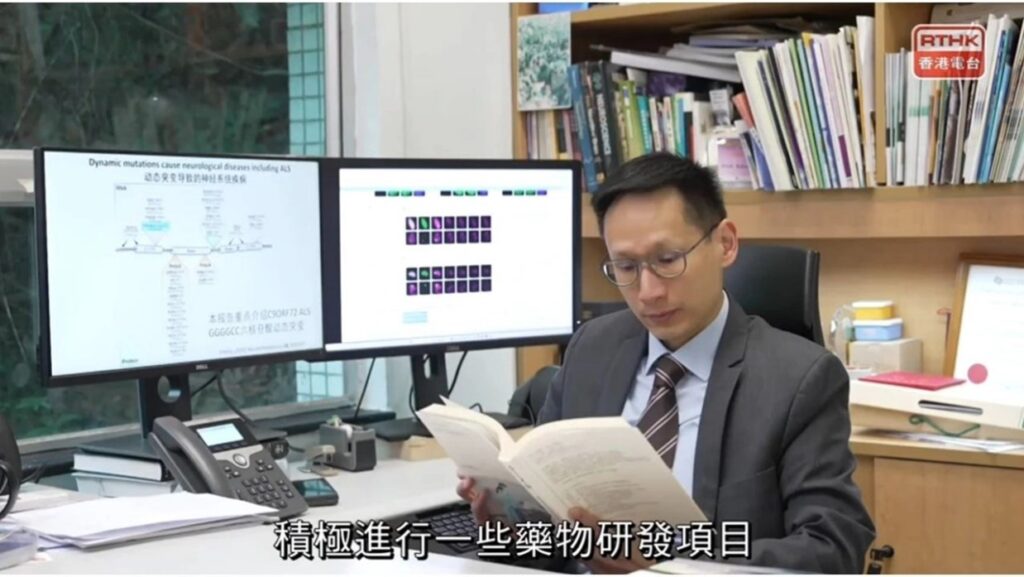
Work against the Clock to Capture the Voices of Patients
Research indicates that in Hong Kong, approximately 1 in every 67 people suffers from a rare disease, accounting for 1.5% of the total population. Due to the low prevalence and the unique nature of medications for rare diseases, they are often overlooked by mainstream society. Researchers face challenges when seeking funding or partnering with pharmaceutical companies.
Edwin often wears a smile, but the past nearly 30 years of his research career have been incredibly challenging. “Many classmates and seniors advised me to switch fields, saying that rare diseases are too difficult. It sounds nice when you say there are over 7,000 rare diseases yet to be studied, and even if I work on them until retirement, I won’t finish them all. But each disease may only have a few dozen patients. When I applied for research funding, I was told that there were too few patients, so gather a few more patients and come back to me. That was impossible! If I give up every time I face obstacles, how can I face the patients? If I don’t work on rare diseases, I won’t even respect myself.
In 2018, Edwin gathered experts from different disciplines and established the Nexus of Rare Neurodegenerative Diseases (NRND) to facilitate the exchange of medical information among its members and raise public awareness through various outreach efforts.
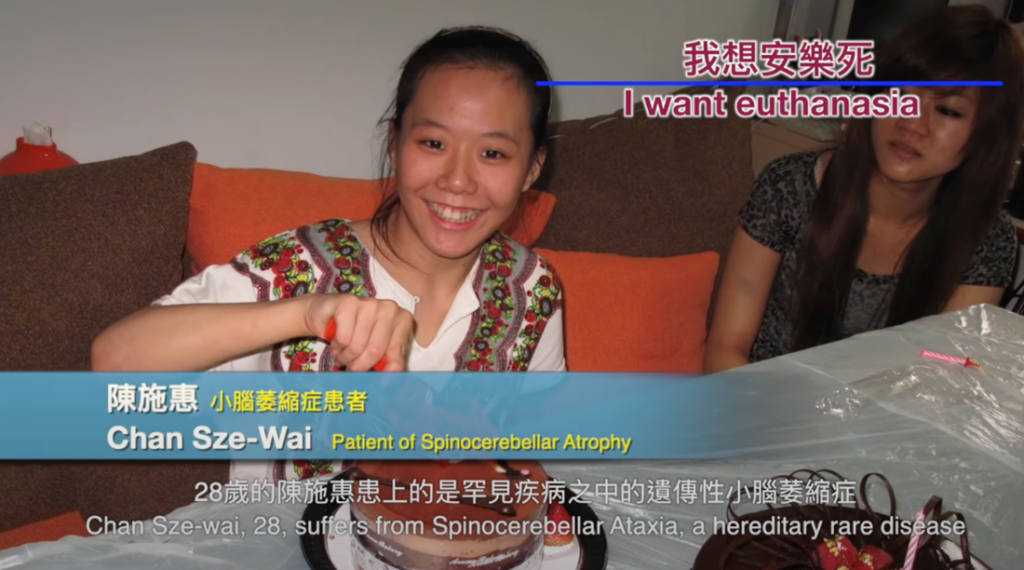
“She can only express her emotions and needs through crying. She can’t do anything at all.” Edwin met Sze-Wai’s mother early in her illness. She tearfully lamented that her daughter was no different from a “living corpse.”
Edwin, with a choked voice, said, “During the home visit, I didn’t hear the patient utter a single word because she had lost her ability to speak. Just before leaving, I asked Sze-Wai’s mother what she would most like to do with her daughter. I thought she might want to go see a movie with her daughter, and I could easily say, ‘No problem, I’ll make time to take you!’ But unexpectedly, her mother said she wanted to know what her daughter was thinking because she hadn’t had a conversation with her daughter in over a decade. Even something as simple as whether she wanted a warm glass of water or a piece of biscuit had to be guessed.”
Many rare diseases belong to degenerative diseases, where the patient’s condition only worsens over time. “SCA is a group of chronic genetic diseases that lead to the gradual death of cerebellar cells. We hope to seize the opportunity while patients still have language abilities and use artificial intelligence technology to assist patients and caregivers in communication.”
AI Technology Delivers the Patients’ Message
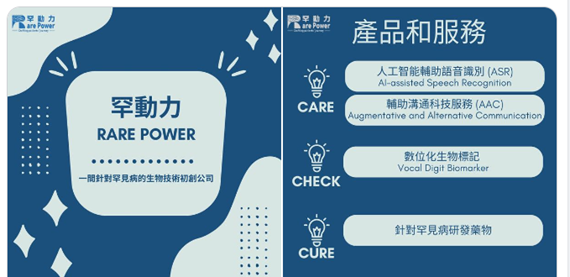
On January 6, 2023, Rare Power Limited, a biotechnology start-up focusing on rare diseases, successfully registered. Edwin, as the founder, experienced failed attempts to find investors and discovered that both patients and caregivers face physical and psychological challenges throughout the treatment journey. Rare Power proposes the “3C” mission and services for the patient’s journey: Check, Care, Cure. Edwin also assembled students from different disciplines to launch the Voice Link project (see the side article: “AI Phonograph” for Rare Disease Patients).
Many rare diseases are genetic, and after completing the first step of genetic testing (Check), patients still have to suffer from the pain from diagnosis, selecting treatment plans, and coping with the treatment. When the severity of the disease reaches an irreversible stage, palliative care becomes necessary. Besides medication, what other hopes do patients have?
“Care is the most diverse and challenging because patients have different needs at different stages. The purpose of the Voice Link project is to record the voice characteristics, intonation, and speech patterns of patients during the early stages of the disease. When their symptoms worsen, AI technology and a vast database can identify the patients’ instructions and use their voices from before the onset of the disease to improve daily communication with caregivers.”
“The next step is to generate digital biomarkers from the patient’s voice and integrate them with AI algorithms. This will create a tailor-made program to identify the patient’s current condition and predict their future degenerative trajectory. This is another form of support beyond drug development, and we hope to successfully develop this communication tool as a glimmer of hope for patients who currently have no available treatment.”
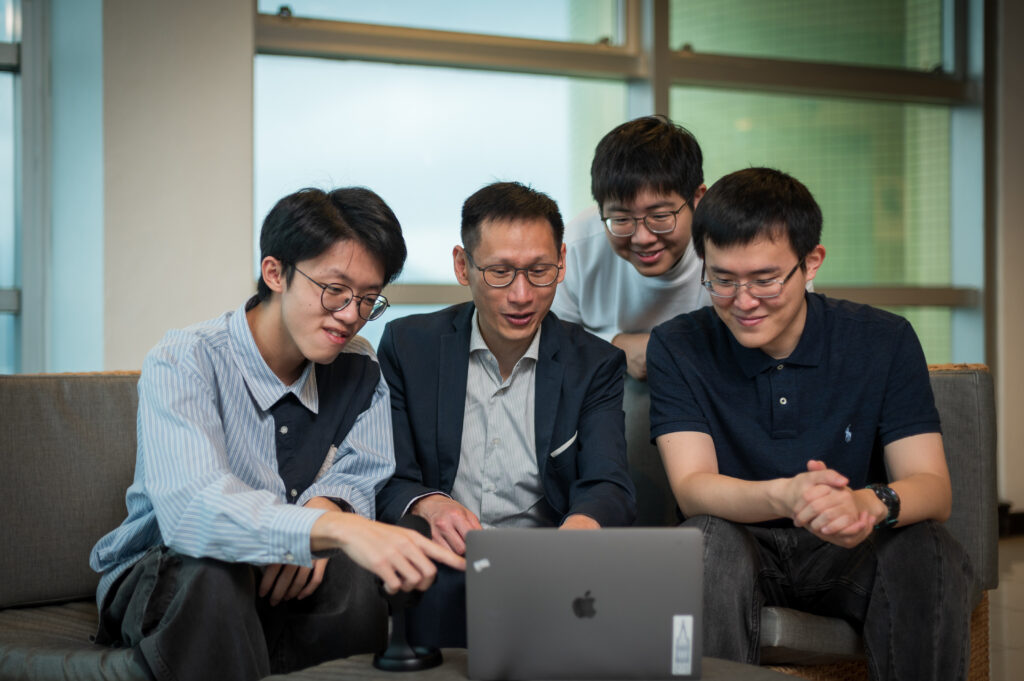
“The patients’ speaking ability is getting worse every year, and training AI to catch up with deterioration is very challenging. Different stages of patients and different illnesses require personalized service. Honestly, there are not many investors willing to invest in this aspect.”
Edwin still believes that AI communication tools are full of development opportunities. “We can refer to data, analyze patients’ speech abilities, and study whether medications are effective. There is a company in Australia that provides similar services and researches and develops AI communication tool products. However, in Chinese-speaking regions, especially those using Cantonese, there is almost nothing available.”
Cross-Disciplinary Super Connector
“My current role, besides a researcher, is also a super connector and a resourceful person in the field of rare diseases. I know some scientists, doctors, and physiotherapists, and when appropriate, I can introduce them to the right patients.”
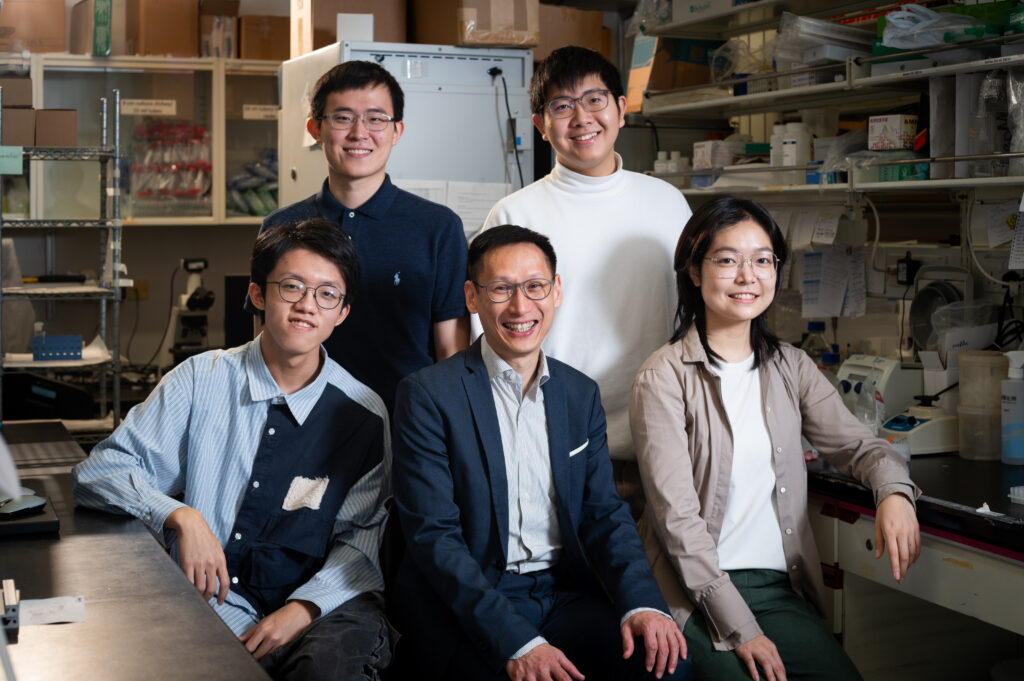
As a teacher, Edwin loves interacting with students the most, but sometimes it also gets him worked up. “Besides rare disease research, what I have always insisted on is walking alongside students. When I see my students, I will go over and greet them. Sometimes, students will even proactively message my wife on Instagram, saying, ‘Why don’t we have breakfast together on a day?’ The benefit of communicating with students is that they will never blindly follow what you say. It can be frustrating at times, but there will also be many surprises. After exchanging ideas, we will arrive at some shared beliefs.”
Edwin is pleased to see multi-institutional collaboration among students with grateful and shining eyes. He looks deeply at the students and says, “Fate does not diminish due to the age difference. I cherish every opportunity to communicate with each student. I strongly believe in the concept of mutual growth from teaching and learning. When I gradually fade, it may be the time when students reignite my initial passion. As a teacher working in a school for over 10 or 30 years, many things seem to progress in a ‘prophetic’ manner. But when you delve deeper and talk with students for longer time, you realize that students are often the guiding light, and I follow that light. The light can be a goal or a reflection. What kind of example should you set for your students to become the masters of our future? Students inspire me to reflect on myself.”
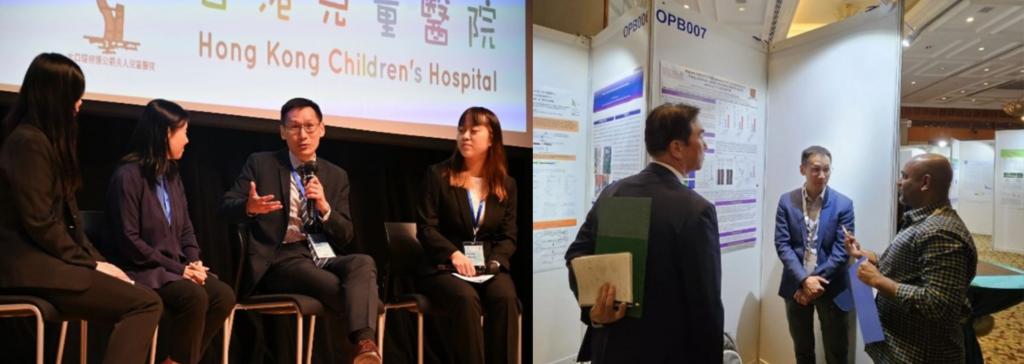
Through the network of patients, Edwin became acquainted with rare disease families in Eastern Europe. One mother even established an organization, facilitating mutual communication and connecting researchers from the United States, Australia, Hong Kong, and other places, resulting in a cross-regional alliance. “I believe that everyone involved in rare disease service work, whether patients, researchers, doctors, or students, should share the same belief. It is the entire team that matters, regardless of nationality, boundaries, or educational background. Each person plays their role to help the rare disease community from all angles. By combining others’ perspectives with my own, we can create new insights and hope to drive progress in the field of rare diseases.”
Sidebar: A Multi-Faceted View of the Future of Rare Diseases: Learning from China’s Rare Disease Policies
TSANG Kin Pin, Chairman of Rare Disease Hong Kong, wrote an article, mentioning that in 2017, a woman in her 30s suffering from tuberous sclerosis complex tearfully testified at a legislative council hearing, expressing her difficulty in affording the average monthly medication cost of HK$20,000 (approximately US$2,560) and hoping that the government could include the medication in the subsidy list. Unfortunately, she did not receive assistance in time and tragically passed away, causing a widespread response in society at the time.
At the “Rare Disease Symposium 2023: Healthy China, No One Left Behind,” organized by the Hong Kong Rare Diseases Alliance last year, several guests discussed two major issues: What lessons can Hong Kong learn from the recent rare disease work in the mainland China? How can Hong Kong integrate into the overall national rare disease work?
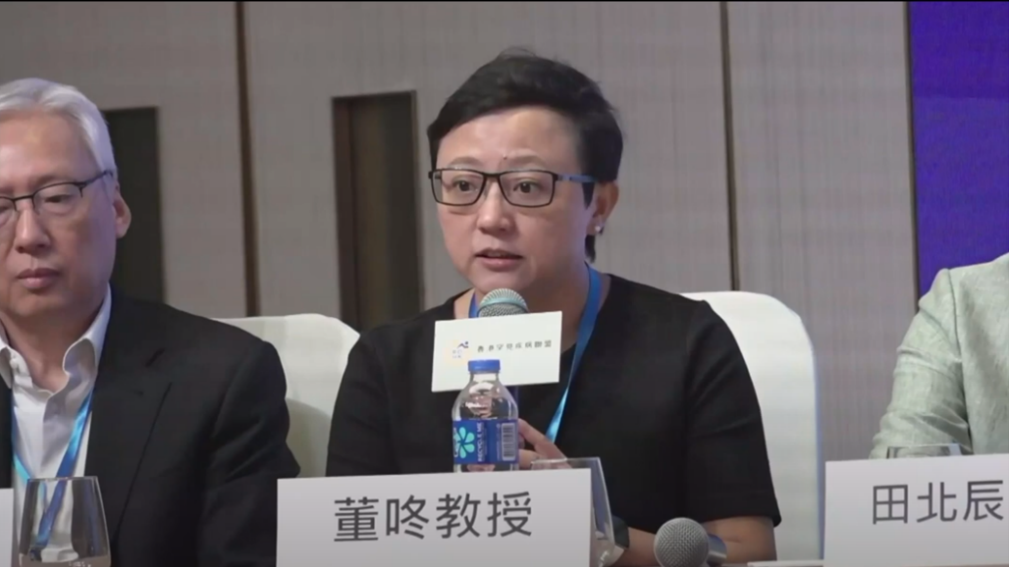
Professor Dong Dong stated, “We found that mainland Chinese patients receive comprehensive support. In 2018, the Chinese government released the first batch of rare disease lists, which included 121 rare diseases. After being included in the list, patients received identity recognition. This year, the second batch of rare disease lists was released, effectively addressing the needs of patients. Can Hong Kong draw from this list to promote policy development? It is worth discussing that there are over 110,000 rare disease patients in Hong Kong. What measures does the Hong Kong government need to ensure their rights and interests?”
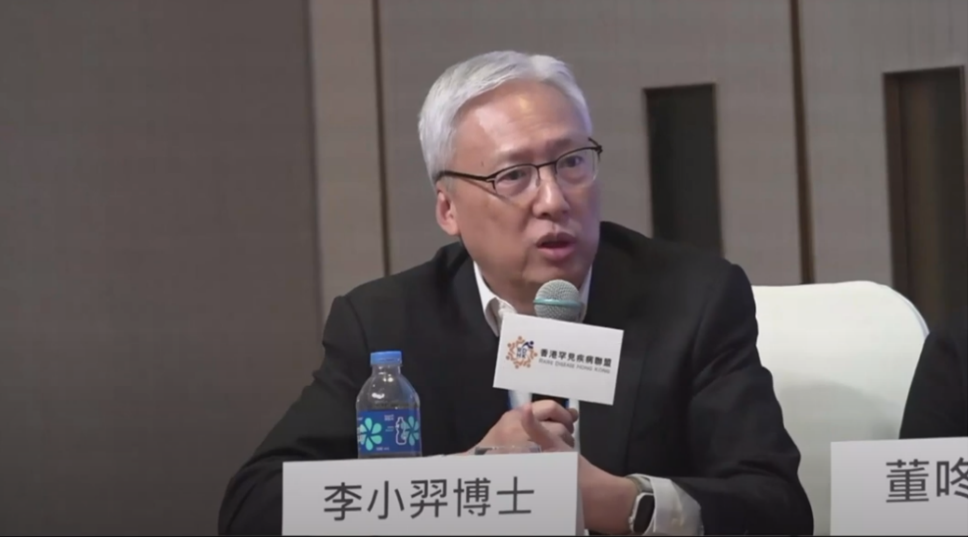
Regarding the development of innovation and technology, Dr. Li Xiao Yi Benjamin who has been engaged in biopharmaceuticals in mainland China for 30 years and is Vice Chairman of the Hong Kong Biotechnology Association and a Hong Kong member of the CPPCC in Anhui Province, shared his insights: “There have been revolutionary changes in rare disease policies in mainland China. Previously, drug registration was extremely difficult. However, since the Rare Disease List was promoted by the China Alliance for Rare Disease in 2018, the registration process for drugs has been significantly shortened. Moreover, with medical insurance in place, when drugs are included in the healthcare system, the burden on patients is reduced. From tens of thousands of Chinese Yuan per month, it may decrease to just a few hundred Chinese Yuan. When patients receive sufficient support, they can lead normal lives, work, and reduce the burden on society, which is beneficial to the entire community.”
“For us developers, the most important thing is that Hong Kong must promote innovation and technology development from the top down. The government should have clear policies. Although patients are a minority, we must also care for them equally. This is beneficial for drug developers and pharmaceutical importers.”
Every life should be respected, and different stakeholders in society hope to bring care and happiness to patients. The well-being of patients involves not only their closest caregivers but also scientists, pharmaceutical companies, pharmaceutical importers, and even the government. It can be said to be the responsibility of all. Only through multifaceted efforts and collaboration can we illuminate the lives of rare disease patients and bring hope to them.
Text: Fong Ka Yan Alice (The Office of Research and Knowledge Transfer Services)
Please feel free to email us at innoport@cuhk.edu.hk to share your thoughts!

